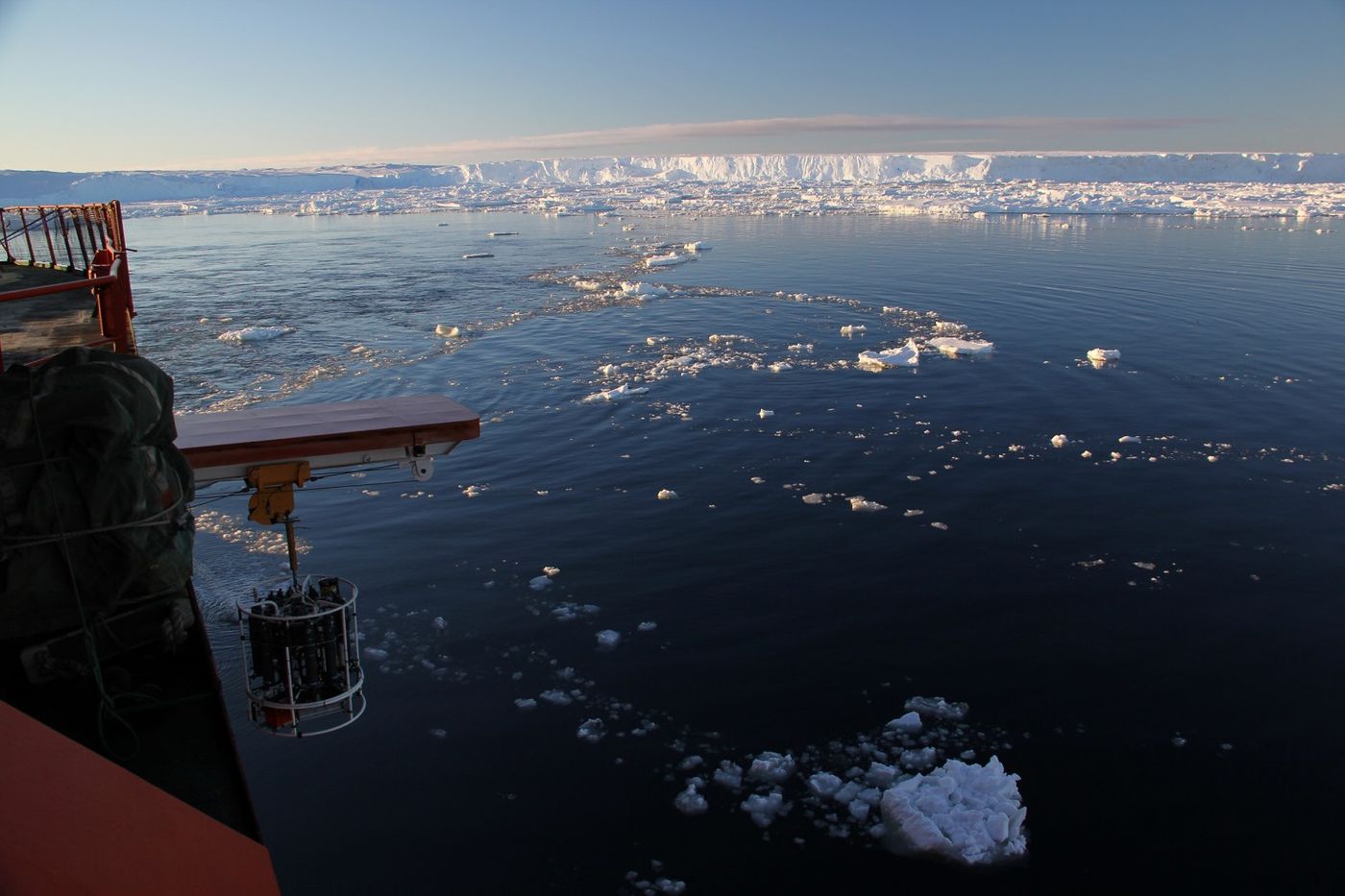East Antarctica's Biggest Glacier Is Melting
Last year a team of Australian researchers discovered a large channel of warm water about 10 kilometres wide and one kilometre deep in front of the western side of the Totten glacier, causing it to melt. Their findings were published recently in Science Advances andgive new information of the impacts of ocean heat on the East Antarctic ice sheet.
The study reports: “Mass loss from the West Antarctic ice shelves and glaciers has been linked to basal melt by ocean heat flux. The Totten Ice Shelf in East Antarctica, which buttresses a marine-based ice sheet with a volume equivalent to at least 3.5 m of global sea-level rise, also experiences rapid basal melt, but the role of ocean forcing was not known because of a lack of observations near the ice shelf. Observations from the Totten calving front confirm that (0.22 ± 0.07) × 106 m3 s−1 of warm water enters the cavity through a newly discovered deep channel. The ocean heat transport into the cavity is sufficient to support the large basal melt rates inferred from glaciological observations. Change in ocean heat flux is a plausible physical mechanism to explain past and projected changes in this sector of the East Antarctic Ice Sheet and its contribution to sea level.”
So what does this actually mean? Lead author Steve Rintoul said it was the first time scientists had been able to test the hypothesis that warm ocean waters were driving the glacier's thinning. "We knew the Totten has been thinning faster than other glaciers in East Antarctica, but nobody has known exactly why until we took these measurements," he said. "We found that warmer ocean water is reaching the cavity through this channel at temperatures capable of melting the ice shelf at the point where it meets ground. This is very important to know because the glacier's grounding line acts as a sort of plug that restricts the rate of ice flow, and helps hold back massive volumes of ice above sea level."
The Washington Post explains in more understandable terms how the measurements, which sampled ocean temperatures in seas over a kilometer (0.62 miles) deep in some places right at the edge of Totten glacier’s floating ice shelf, affirmed that warm ocean water is flowing in towards the glacier at the rate of 220,000 cubic meters per second. This warm water is causing the ice shelf to lose between 63 and 80 billion tons of its mass to the ocean per year, and to lose about 10 meters (32 feet) of thickness annually. This matters because more of East Antarctica flows out towards the sea through the Totten glacier region than for any other glacier in the entirety of the East Antarctic ice sheet. How much exactly does the Totten glacier catchment account for? A size larger than California. And the big kapow: if all of this ice were to end up in the ocean somehow, seas would rise by about 11.5 feet.
However, hold your anxieties for a moment, as your coastal town isn’t about to be flooded tomorrow. Totten hasn’t started contributing much to sea-level rise yet. The large loss of ice from the ice shelf doesn’t raise seas because that ice is already afloat. Nevertheless, the weakening of the ice shelf is troubling because the shelf holds back Totten’s more dangerous ice, and when it goes it will allow that ice to flow more easily into the ocean.
Sources: The Washington Post, Science Advances, ABC









